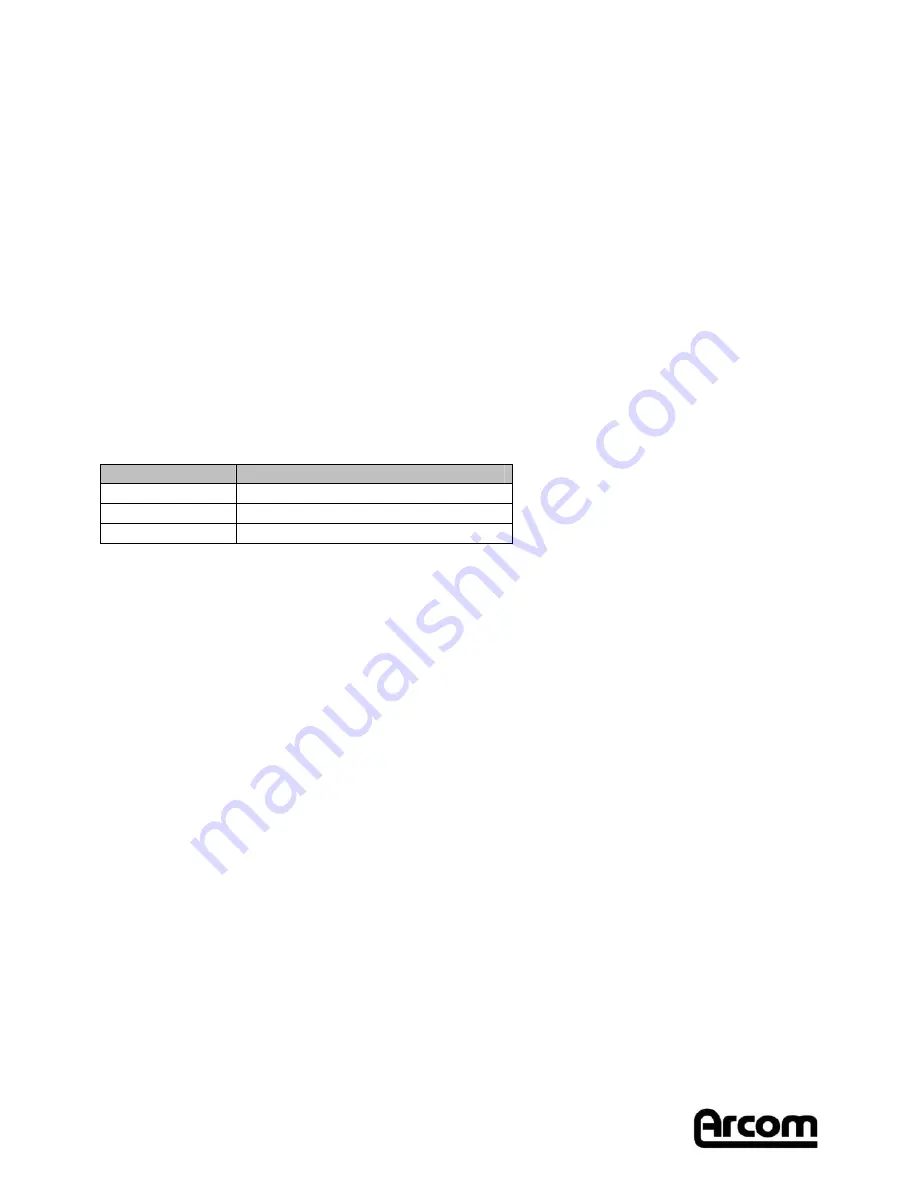
2192-12132-000-000
The PXA255 GP lines must be configured using the registers built into the device to ensure they
function correctly. Various features can be programmed for each pin including direction control
and alternate function. These are setup up by RedBoot by default.
The general purpose inputs are 5V tolerant, while the outputs can sink and source up to 24mA
@ 3.3V.
PC/104 Interface
The PC/104 interface supports 8/16 bit ISA bus style signals. Add on boards can be used to
enhance the functionality of the main board. Arcom has an extensive range of PC/104 compliant
modules and these can be used to quickly add digital I/O, analog I/O, serial ports, video capture
devices, PC CARD interfaces etc. The ISA bus is based on the x86 architecture and is not
normally associated with RISC processors. It will probably be necessary to modify standard
drivers to support any 3
rd
party PC104 modules.
Any PC/104 board plugged in will appear in the PC Card memory space (Socket 1, while the
CompactFlash is Socket 0).
Start Address
Region Name
0x3C00 0000
Socket 1 PC/104 Memory Space
0x3400 0000
Reserved
0x3000 0000
Socket 1 PC/104 I/O Space
The PC/104 bus signals are compatible with the ISA bus electrical timing definitions. DMA and
bus mastering is not supported on VIPER’s PC/104 interface. For details on PC/104 Interrupts
please refer to the Interrupt section of this manual.
Serial Ports
There are five high speed 16550 serial UART’s on the VIPER. All five channels are fully
functionally compatible with the 16550 and can be used as standard RS232 serial interfaces.
COM1
COM1 uses the Full Function UART in the PXA255 (FFUART). The port is buffered to RS232
levels, and supports full handshaking and modem control signals.
COM2
COM2 uses the Bluetooth UART in the PXA255 (BTUART). The port is buffered to RS232 and
supports RTS, CTS handshaking.
COM3
COM3 uses the Standard UART. The port is buffered to RS232, but does not support any
handshaking (Rx / Tx only).
COM4
COM4 uses UART1 of the external 16C2852 device (See table below).
COM5
COM5 uses UART2 of the external 16C2852 device (See table below).
Page 24

































